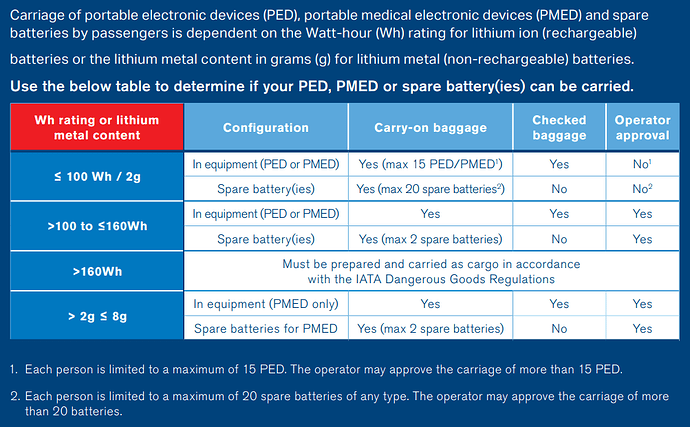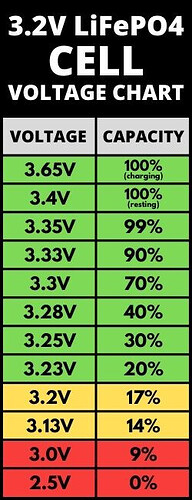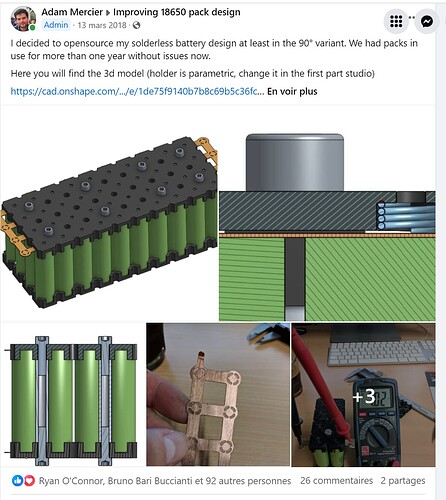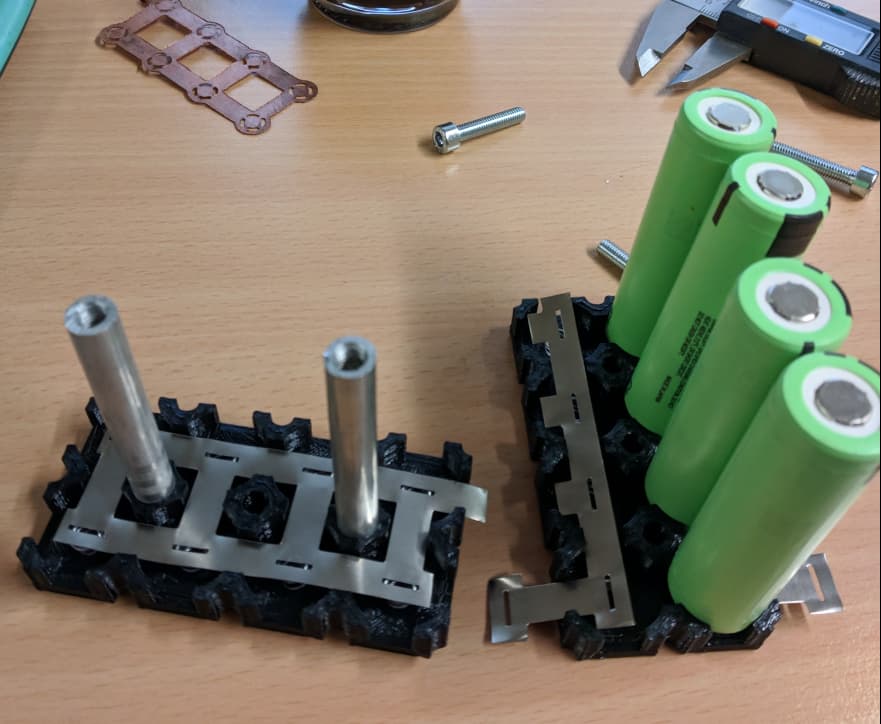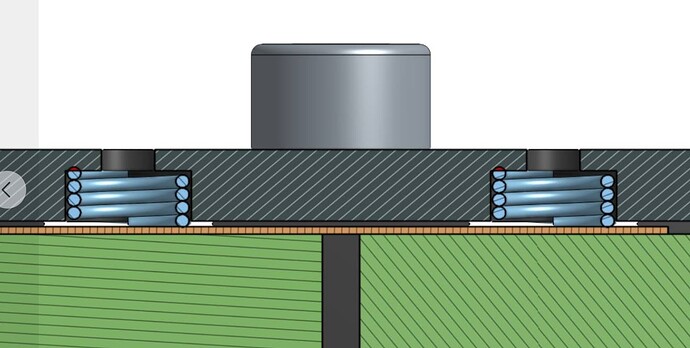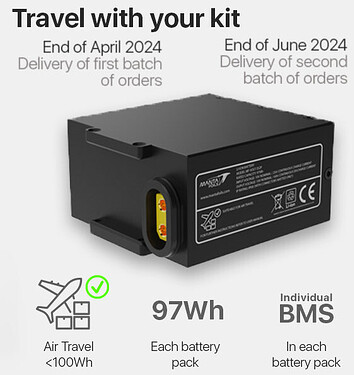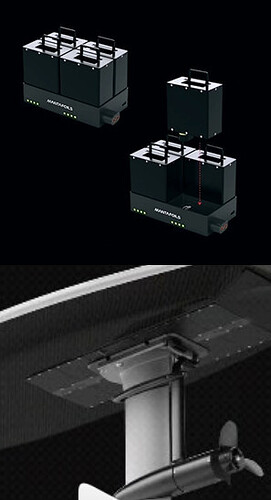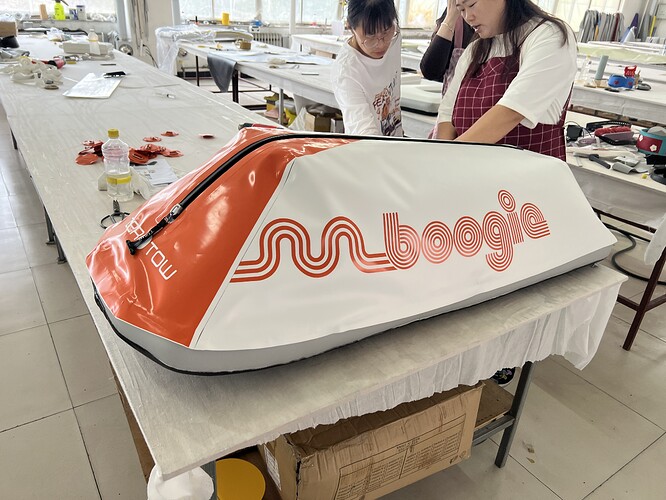Before attempting to build a large battery you intend on brining on a plane please read this full post and make sure you do everything in your power to make it as safe as possible. No cutting corners!!! High energy batteries are no joke and planes have crashed and people have died because of them. Regulations are in place to keep people safe so lets treat them with respect so things don’t get even more regulated. With the right precautions taken there should be virtually no risk of bring a battery outlined in the post on a plane.
I have a trip planned to Hawaii in 5 months and I would love to bring an efoil. However my 2.5kWh, 36lbs battery made out of 168 Samsung 40Ts is probably going to raise some flags getting through TSA. I spent the last few days heavily researching the regulations regarding flying on passenger air plans with batteries. My research really only applies to the USA though so if you are in another country a lot of these rules might be different but I’m sure there are some similarities. Also if anyone has any first hand experience or knowledge please feel free to let me know or correct me.
From what I understand there are 3 main bureaucracy you have to keep happy the FAA, TSA and the air line you are traveling with. Many airlines partner with another bureaucracy called the IATA or the International Air Transport Association. They seem to work with the airlines to make regulations for air travel including passenger and freight. The IATA is going to be pretty hard to get around because they currently regulate 83% of the worldwide air traffic. Some common US airlines they work with are Delta, Hawaiian, JetBlue, United, American, FedEx and UPS but they work with hundreds of others. Out of theses three bureaucracy’s the IATA seem to have the most strict regulations.
This is a table the IATA provides about what batteries and how many are allowed on passenger planes:
Link to the table above:
Link to another detailed document:
The table says each person is allowed to have a maximum of 20 spare batteries of any type and a maximum of 15 PED’s (Personal Electronic Device) of any type. A personal electronic device would be something like a cell phone or a camera, something that has a battery inside of it. Travel battery banks for charging your phone or laptop do not count as PED’s they count as spare batteries. You are allowed to carry up to 20 batteries that are 100Wh or less. And up to 2 batteries between 100 and 160Wh with air line approval. From what I have read this higher 160Wh limit is less common especially internationally but 100Wh seems to be world wide. There looks to be no cap on PED’s at 160Wh or under besides the fact that you can only have 15 PED’s per person. But again I would be careful going above the 100Wh limit for PED’s as well. All spare batteries must be in the carry on but the PED’s can be checked if you completely turn them off and protect them from damage. The grams of lithium in the battery on the chart only applies to non rechargeable lithium metal batteries not lithium ion.
In the document containing the table it also says spare batteries must be individually protected to prevent short circuit by placing it in the original packaging or by insulating the terminals. It also states batteries must be of a type that meets the requirements of the UN Manual of Tests and Criteria,
Part III, subsection 38.3.
Site with a brief description of UN 38.3:
Full UN Manual of Tests and Criteria: (page 420)
UN 38.3 Info:
UN 38.3 tests methods and procedures to ensure lithium-ion batteries are suitable for transport. These test methods are designed to simulate many possible extreme conditions a battery may be subjected to during international transportation. It tests things like shock, low pressure, thermal and overcharging. UN 38.3 also says that all rechargeable and non-rechargeable battery types, including those composed of previously tested cells, shall be subjected to tests T.1 to T.5 and T.7. This is why people can’t usually bring there DIY batteries on a plane. Even if you made your battery out of name brand Samsung cell that meet UN 38.3, since you attached them all together it now is classified as a new battery. Unless you go through the prosses of hiring a company like Intertek for god knows how much money to test your battery you are never going to meet UN 38.3.
Help! Anyone have any input on this?
The part of this research I am struggling the most is in regards to meeting the the UN 38.3 requirement. There are very few sites that outright tell you if the battery they are selling has been tested and if it meets UN 38.3. I have tried to email some companies but they either haven’t been really helpful or just don’t respond. But when I think about it more, in order to be transported I think every battery has to meet UN 38.3 unless its a prototype. So I would think every mass produced battery that has arrived at my door has met UN 38.3 unless a company is breaking the rules???
State of charge:
The last requirement I would keep in mind is the state of charge of the batteries. In order to ship many batteries the IATA also wants you to discharge the battery to 30%. They do this to reduce the amount of energy stored in the battery which makes pretty much all lithium battery types way safer for transportation. Ideally 0% would be better but long term storage would damage the battery. I couldn’t find any information about requiring this for passenger air planes. It would be pretty useless if you power bake for you phone could only be charged to 30% before you bring it on the plane. But, I would still strongly recommend it for our use case though. Again the safer we can be the better, we already have enough regulations.
FAA and TSA:
Like I said earlier the IATA seems to have the most strict regulations unless your air line imposes more so always check with them as well. As for the FAA they are pretty much identical to the IATA except there is no limit to how many spare batteries or PED’s you can bring as long as they are under 100Wh. The FAA links to “49 CFR 175.10(a).(18)” which goes into more detail about regulations. One part that confused me a little was “(iii)” where they talked about non spillable batteries which have a lot more restrictions. I thought any battery that was sealed fell into this category but it’s more for lead acid to car batteries so it shouldn’t apply to lithium. The TSA regulations are basically identical to the FAA.
49 CFR 175.10(a).(18)
That will conclude my discussion of regulations. I hope you enjoyed!
My Design!
The biggest hurdle for the design is not going over the 20 spare batteries under 100Wh limit the IATA and most air lines impose. One Idea is that I could build up to 20 smaller packs that could be connected all together when using the foil day to day and then be taken apart when traveling on an air pane. I could make it pretty energy dense too using 6 Molicel P45B’s and get 97.2 Wh per pack. When I tied them all together I could have a 1.94kWh pack that was air plane legal. Except that it wouldn’t be air plane legal because my custom packs do not meet the UN 38.3 standards. Even if the Molicel P45B’s were tested and passed UN 38.3, since I now attached 6 of them together it now counts as a new battery and needs to be tested again.
Lithium-Ion:
What I really need is a battery that could be taken apart at the cell level. If all I take on the plane is 20 independently packaged cells with no wires attached and they are under 100 Wh I meet all the regulations. The problem is most batteries we use on this form are 18650 and 21700 cells. The most energy dense 21700 cell I could find is around 20 Wh. So 20 of these would make a very small battery with 400Wh and in no way would be able to supply an efoil with enough current to run. There are larger Lithium-ion cells out there but they are way less common and still don’t do much better then then the largest 21700 cell I could find.
LiFePO4, LFP:
Another battery chemistry that is getting ever more common is lithium iron phosphate (LiFePO4 or LFP). They are not as energy dense as Lithium-Ion and have a lower cell voltage but they do have some advantages. They are a lot safer then Lithium-ion, have higher cycle life and most notable come in way larger cell sizes. LFP batteries come in 2 different forms prismatic and cylindrical cells. Prismatic cells look kind of like a car battery and are rectangular with two terminals on the top. They aren’t typically as energy dense as cylindrical cells and can sometimes leak or budge. Since they are rectangular they are pretty easy to fit together tightly and the flat walls can be easy to cool. Both cell types can come with screw terminals on the positive and negative side of the battery which makes connecting them together easy. The cylindrical types can also come without screw terminal like typical 18650 and 21700 cells. I’m having an easier time finding the cylindrical type batteries without screw terminals so I think I’m going to go with them.
Cell Selection:
Since LFP batteries are 3.2v nominal I could have up to a 31 Ah cell and have it be under the 100Wh limit. At this capacity the batteries start getting pretty heavy and I want this battery to be relatively light weight and easy to travel with. I decided to aim for the 20Ah region which would give me lighter cells and still 64Wh per cell. As of right now unless anyone has some better ideas I think I’m going to go with the ‘TB-40138-HE-20Ah-LFP’ cell made by Top Band. Its even sold on amazon but its a little pricey at $16.50 per cell if you live in Europe you could probably buy it from NKON and then them for €8.45 a cell.
Amazon Link
Nkon Link
Specs from Top Band
TB-40138-HE-20Ah-LFP
Top band rate this cell at 60A continues discharge which should be plenty when foiling in a 17s1p arrangement. I’m pretty sure it should be able to dump more current then that for a short time when getting up on foil but we will see. A lot of the efficient efoils I have been seeing on the form use about 3000 watts to get up on foil this would be pulling only 55 amps from the battery at nominal voltage. LFP batteries have an extremely linear discharge curve and stay at 3.3 volts for almost there full discharge cycle. They can be charged up to 3.65v and discharged to about 2.5v but you gain very little capacity going to those extremes. Instead I intend to only charge to 3.4v and discharge to only 3.0v. Even with this big cut in voltage the battery’s capacity is only effected by about 10% and it will make the cycle life improve even more.
Good Video about charging and discharging LFP
Why 17s?
I chose to use 17 cells in series because at my 3.4v per cell cut off this gives me a max voltage of 57.8v which is very close to a 14s lion battery. Many major efoil brands and most people on this forum agree that the max safe voltage for an efoil is 60 volts or about 14s lion. So I decided to get the max voltage posable while stay safe to get the highest efficiency battery I can. I did some quick math and just from the battery heat generation alone going from 16s to 17s makes the battery 11% more efficient! With a 17s1p battery made from the Top Band cells I can get 1088 Wh and be able to dump 3264 watts continually without going above the battery spec. The cells alone will weigh 15.7 lbs which is kind of a lot but should be totally manageable.
Battery Connections:
The batteries will be placed in some kind of water tight box and will stay in there all the time unless I’m going on an air plane. I’m not quite sure how I’m going to attach the batteries together while maintain the ability to take them apart but I will probably come up with a beefed up version of this:
https://vruzend.com/
Traveling:
When I do travel with the batteries I would fist discharge the whole battery down to 30% capacity to make it even safer to travel with. I would then open up the waterproof box they are stored in and take them out of there holders. I then plan on building a box out of something fire retardant and electrically isolating like G-10 that will will hold each cell in its own little box so they don’t touch. Just like the carboard boxes most cells are shipped in. I also plan on printing out some of the regulation documentation I have found incase TSA has any issues. When I get to my destination I reassemble my pack and charge it up!
I would be very curios what everyone else thinks about this idea. Feel free to give me any feedback or criticism. Also if you have any better battery cell recommendations let me know. I’ll probably buy some cells in the next few weeks and will start working on the design in the next few months.
